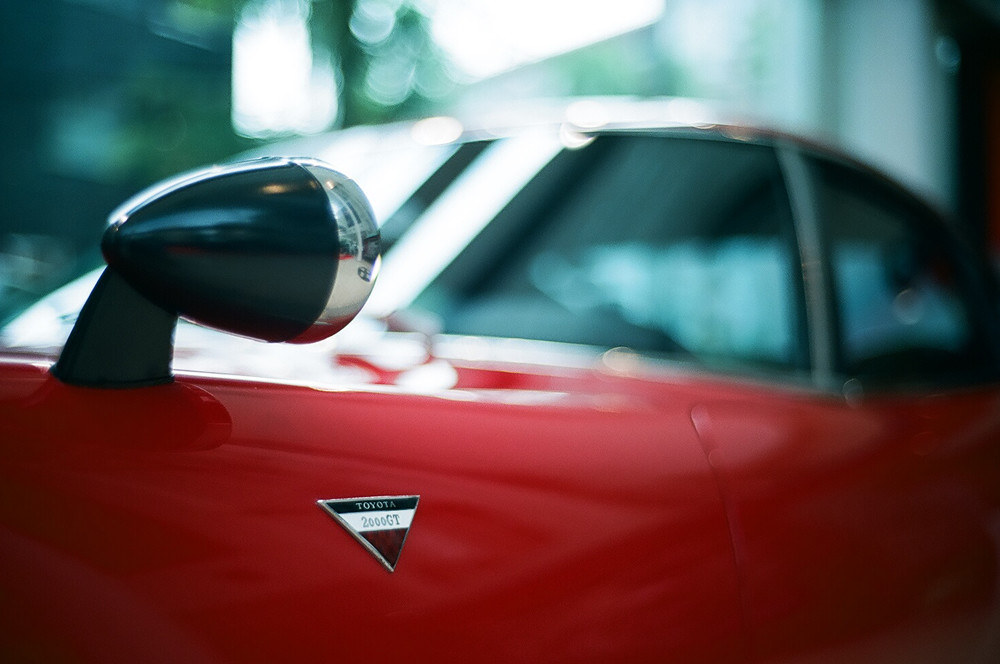From my Bessa & Nokton
f1.4 on Ektar...

While much has been written recently about the record price of $1.2m paid for a Toyota 2000GT in the US, they can still be had in Japan for much more reasonable sums. There are even a number available in daily driver status, one or two available for restoration, and they regularly appear in car shows and display events, and can been seen driven on the occasional touge run, too. I’ve been passed by a number like that…
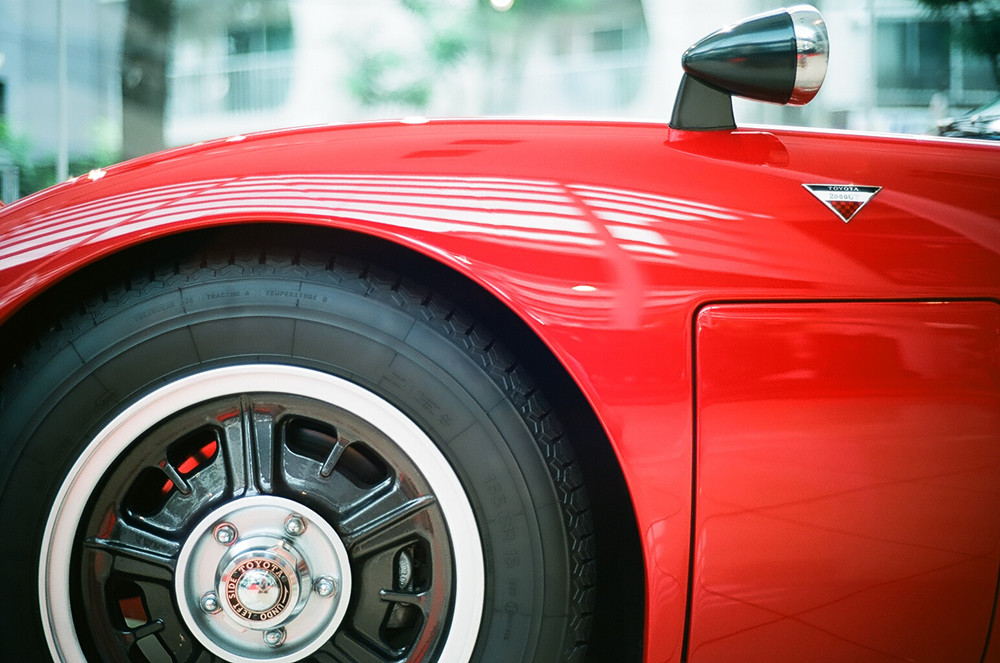
Commentary is sometimes made on the perceived ‘derivative’ nature of their design, too, with some making comments about E-Types or 240Zs. To do so, though, is perhaps the domain of someone who has never seen one in the metal, or from someone who does not truly appreciate the subtleties of automotive design.
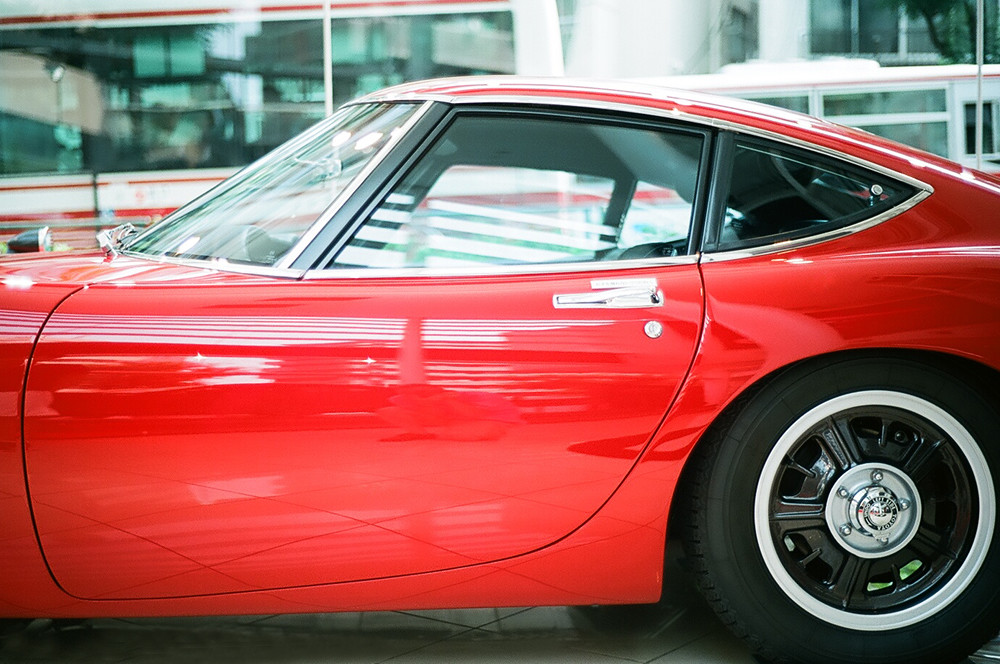
In person, they are lithe, elegant, and more sensuous in form than even some Ferraris from the era. As well as being extremely low to the ground, the front window wraparound to the side glass gives an integrated glasshouse look, and the long nose compliments the overall purposeful feel. The hand-formed body has the classic stretched-over-the-mechanicals feeling, being trimmed smoothly with nearly flush glass and chromed accents. The 2000GT is not a big car.
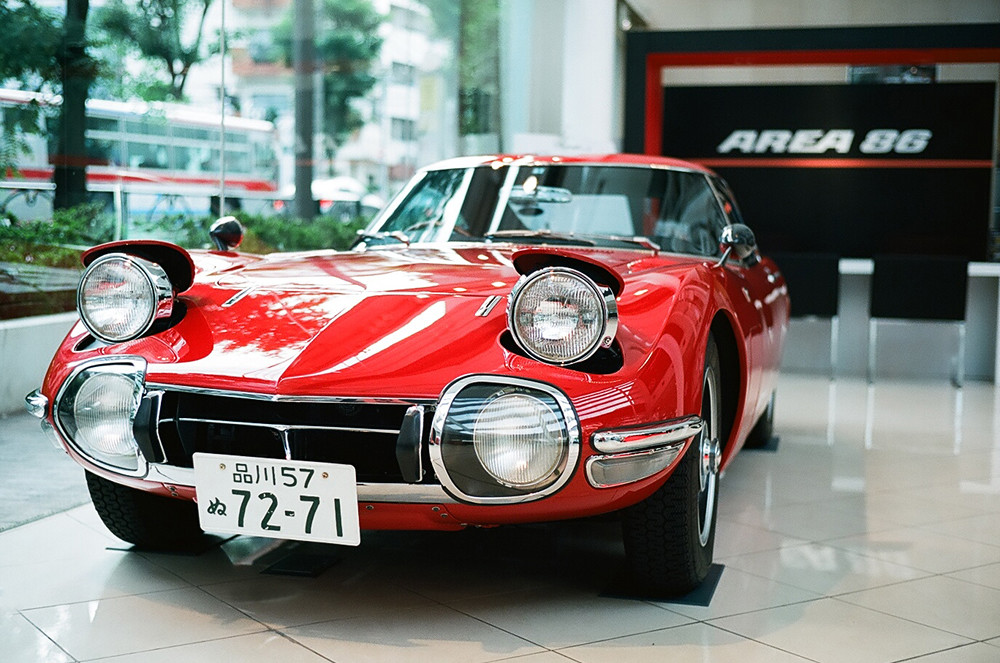
The major design element setting the 2000GT apart is the simple waistline – a swage line in some places, a door shut-line in others – integrating smoothly into the tail section as the trailing lip of the rear hatch door. It starts with an upward taper over the front wheels, runs to a soft depression onto the trailing edge of the doors, joins the smooth flow upwards with the rear window line over the rear wheel arch, and then drops away to form a sharp-edged line around the tail. Often missed in photographs, but easily apparent on the road is the soft up-kick in the rear line over each of the taillights – this simple change in line imparting a very pleasing look to a departing 2000GT tail.
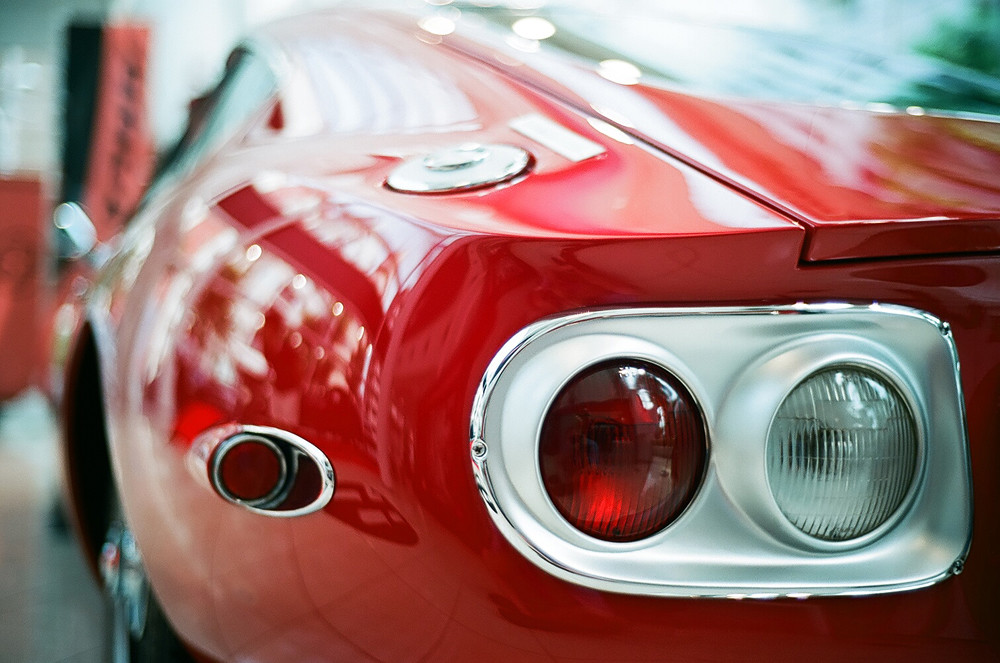
Additional design elements such as the two-tone alloys, cloisonné badge work, wing mirrors, piano wood interior (built by Yamaha) with clock and stopwatch in-dash all add to the design. For me, perhaps the only out-of-place element is the auxiliary rear reflector, partially frenched into the trailing edge of the rear fender. Some prefer the MF12 over the MF10, too, for its smoother integrated driving light placement.
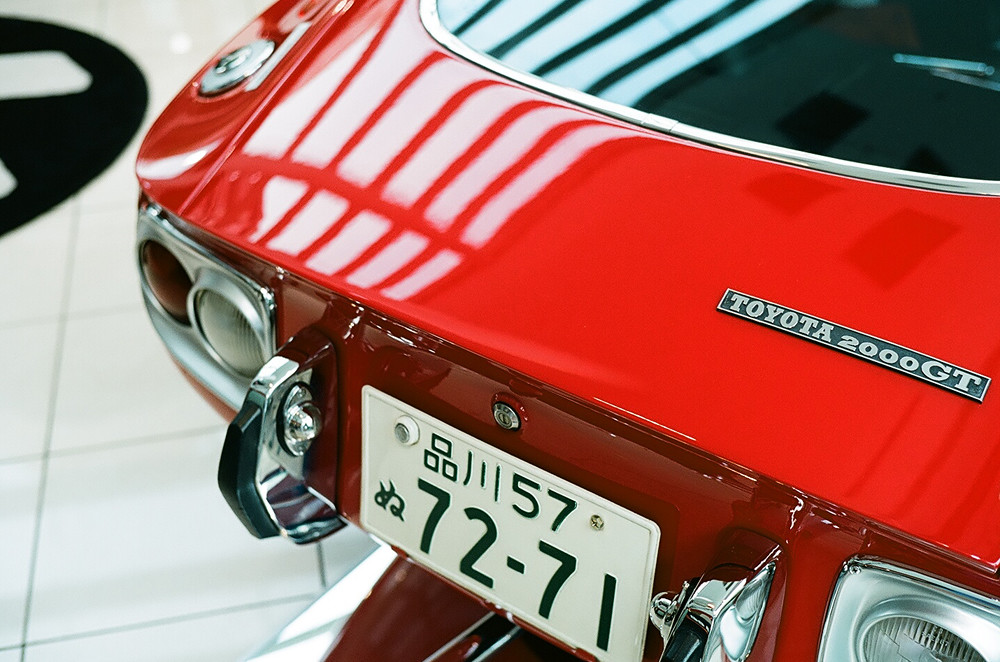
With many photographs of 2000GT on circulation, I set out to photograph this local example – one of the few I’ve seen in red – with a view to highlighting their unique attributes. I stood there for over 30 minutes slowly shooting one roll of film, enjoying every frame taken…


